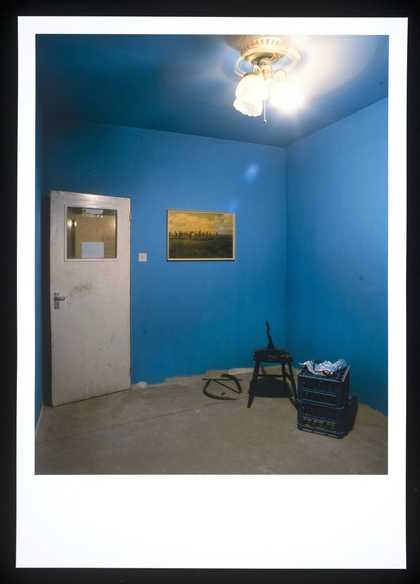
Mike Nelson
Heroin Room, (The Coral Reef) 2000 (2007)
Tate
Mike Nelson was born in Loughborough in 1967. He studied at Reading University from 1986-90 and went on to complete an MA in Sculpture at Chelsea College of Art & Design, London, in 1992-3. Nelson won first prize in the Economist Summer Show in 1993 and was subsequently selected for BT New Contemporaries touring exhibition. He had his first solo exhibition, Charity Shop, at Transmission Gallery, Glasgow in 1994 and since then has had nine further solo shows in the UK and Europe, the most recent of which, The Coral Reef, was at Matt’s Gallery, London, in 2000. He has participated in numerous group exhibitions both nationally and overseas and last year exhibited three different works at Southampton, Cardiff and Birmingham for the British Art Show 5.
Mike Nelson’s work
Using a jumble of apparently discarded everyday materials, such as timber, furniture, magazines and clothing, Nelson constructs large-scale, highly architectural, site-specific installations that often arise from a period of living and working in a particular location. In them he fuses literary, filmic, socio-political and cultural references, both associated with and imposed upon the site, to create haunting environments which evoke strange and disturbing narratives - a place that people have vanished from like the Mary Celeste, or where a crime has been commited, where something awful has happened or is about to happen. Nelson’s arrangement of his materials is never arbitrary, but carefully crafted and organised, in an idiosyncratic way, to create his new fictions.
Nelson’s pieces often suggest journeys to alien worlds. Taylor 1994, comprising a large makeshift raft with that name, makes reference to the marooned astronaut in the cult film Planet of the Apes, while Agent Dixon at the Red Star Hotel 1995, presents a ramshackle, Turkish space shuttle, its cabin complete with hammock, cooking pots and crash helmets. Such installations draw the viewer into their fictional, at first glance baffling scenarios, which, having no fixed point or answer; therefore depend upon the spectator creating their own reading of Nelson’s visual symbols and clues. As David Burrows has observed, viewing Nelson’s exhibitions becomes ‘an act of storytelling, Nelson’s fictional index transforms the everyday object by taking the visitor to another place’.
Tales of transition, alienation and otherness also lie at the heart of many of Nelson’s installations. The Coral Reef 2000, for example, lures the viewer through a labyrinth of shabby interconnected rooms, abandoned, inhospitable spaces in which disquiet and disorientation is evoked. These spaces all have the character of generic waiting or reception rooms, but particular identities become apparent through different ethnic and cultural decors and details, an empty sleeping bag, an Islamic calendar, a wall hanging of JFK, a smashed chair. Individual characteristics and cultural histories unfold and narratives accumulate by association. As in much of his work, Nelson here creates situations that attempt to raise questions about individual and cultural standpoints by presenting the viewer with an ambiguous range of readings from the overlapping narratives diffused throughout his network of objects
